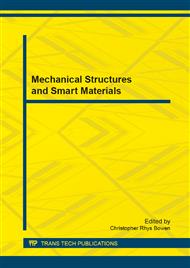p.587
p.591
p.595
p.601
p.606
p.611
p.617
p.621
p.626
A Non-Contacted Magnetic Sensor with Direction Memory Based on Biot-Savart Theory
Abstract:
Magnetic sensor with direction memory can be used to control the motion direction. Based on Biot-Savart theory, the magnetic field distribution expression of a bar-type in external space is derived, and the superposition distribution of both inner and outer magnet is directed by the principle of superposition, which can be used to quantitatively describe the magnetic distribution formed by inner and outer magnet, and accurately scope the effective field. According to the operating characteristics of the magnetic reed switch with different value of pull-in and drop-out, by a proper detecting distance to ensure the magnetic field strength value of inner magnet at magnetic reed switch greater than pull-in value and less than drop-out value to make magnetic reed switch maintaining the original state when outer magnet leaving. Meanwhile, by a proper detecting distance to ensure the superinposed magnetic field strength value greater than pull-in value in the forward direction, and less than drop-out value in backward direction. Calculation of response curves show the impacts of magnet size, response intensity and detecting distance variation on the sensor.
Info:
Periodical:
Pages:
606-610
Citation:
Online since:
January 2014
Authors:
Price:
Сopyright:
© 2014 Trans Tech Publications Ltd. All Rights Reserved
Share:
Citation:


